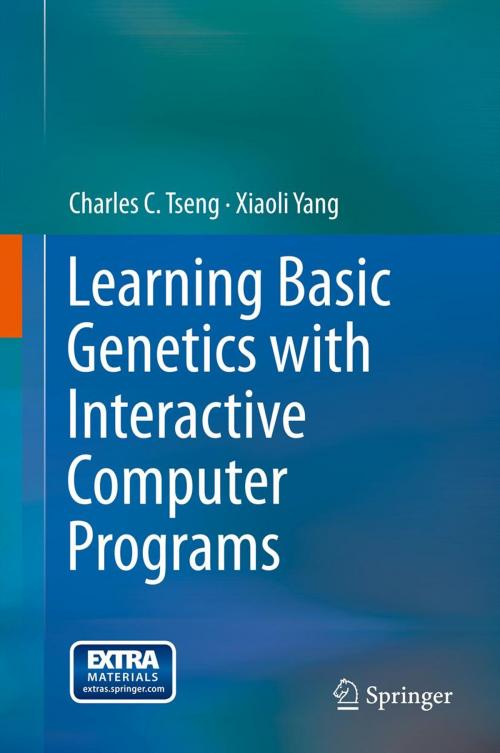Learning Basic Genetics with Interactive Computer Programs
Nonfiction, Health & Well Being, Medical, Medical Science, Genetics, Computers, Advanced Computing, Computer Science| Author: | Charles C. Tseng, Xiaoli Yang | ISBN: | 9781461460831 |
| Publisher: | Springer New York | Publication: | July 8, 2014 |
| Imprint: | Springer | Language: | English |
| Author: | Charles C. Tseng, Xiaoli Yang |
| ISBN: | 9781461460831 |
| Publisher: | Springer New York |
| Publication: | July 8, 2014 |
| Imprint: | Springer |
| Language: | English |
Traditionally, genetics laboratory exercises at the university level focus on mono- and dihybrid crosses and phenotypic analysis—exercises under traditional time, materials, and process constraints. Lately, molecular techniques such as gene cloning, polymerase chain reactions (PCR), and bioinformatics are being included in many teaching laboratories—where affordable. Human chromosome analysis, when present at all, has often been restricted to simple identification of chromosomes by number, through the usual “cut-and-paste” method. Although several online karyotyping (chromosome identification) programs have become available, they are not meaningful for studying the dynamics of the chromosome system, nor do they help students understand genetics as a discipline.
The software that accompanies this book has been shown to be an ideal tool for learning about genetics, which requires a combination of understanding, conceptualization, and practical experience.
Traditionally, genetics laboratory exercises at the university level focus on mono- and dihybrid crosses and phenotypic analysis—exercises under traditional time, materials, and process constraints. Lately, molecular techniques such as gene cloning, polymerase chain reactions (PCR), and bioinformatics are being included in many teaching laboratories—where affordable. Human chromosome analysis, when present at all, has often been restricted to simple identification of chromosomes by number, through the usual “cut-and-paste” method. Although several online karyotyping (chromosome identification) programs have become available, they are not meaningful for studying the dynamics of the chromosome system, nor do they help students understand genetics as a discipline.
The software that accompanies this book has been shown to be an ideal tool for learning about genetics, which requires a combination of understanding, conceptualization, and practical experience.















